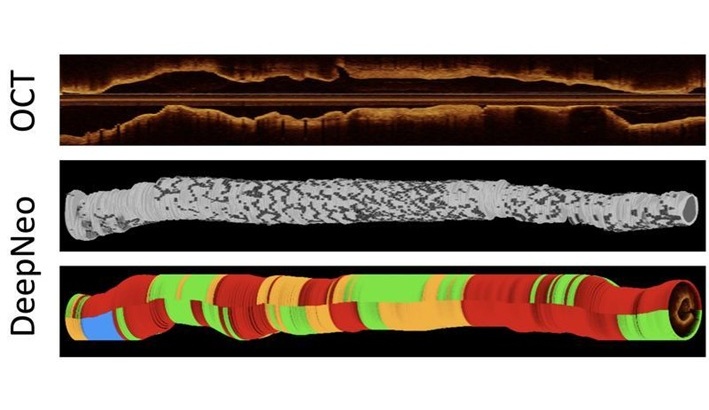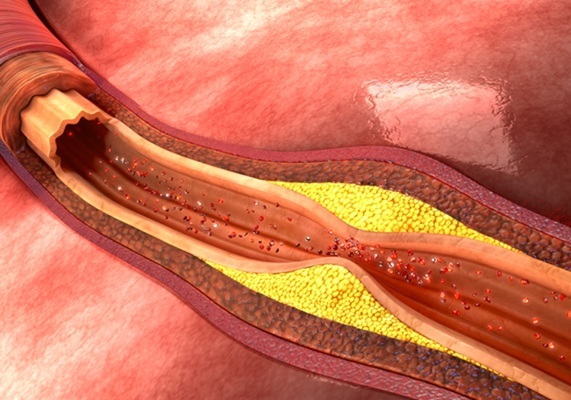Ventilated COVID-19 Patients Could Benefit from Tracheotomy
|
By HospiMedica International staff writers Posted on 02 Jun 2020 |
Tracheotomy might be reasonable for some patients with COVID-19 who have been ventilated for more than 21 days, according to a new guideline.
Issued by surgeons at the University of Pennsylvania (Penn; Philadelphia, USA) serving on the COVID-19 tracheotomy task force, the guideline highlights specific considerations regarding tracheotomy for patients with COVID-19 that are on ventilatory support. Based on available evidence, they recommend that tracheotomy might be considered in patients with durations of intubation greater than 21 days who are otherwise without significant comorbidities, and who would be expected to have a good prognosis if they survive.
Tracheotomy before 21 days should not be done routinely in these patients solely due to prolonged ventilator dependence, due to the high risk of transmission and poor prognosis of patients requiring intubation and ventilation. Tracheotomy for other indications, such as a known difficult airway, should be considered in COVID-19 patients on a case-by-case basis; when deemed necessary in these patients, an open surgical tracheotomy should be favored over a percutaneous dilational tracheotomy in order to minimize aerosol generation.
Where possible, these tracheotomies should be performed at bedside in a negative pressure room to minimize the risk of transmission during patient transport, and team members in the room should be kept to the minimal critical number, preferably with highly experienced personnel. Airborne and droplet precautions should be followed, and each person in the room should properly don and doff personal protective equipment (PPE). In addition, a multidisciplinary discussion of the patient's goals of care, overall prognosis, and the expected benefits of tracheotomy should be a critical part of the decision-making process. The guideline was published on May 19, 2020, in Annals of Surgery.
“Early tracheostomy must be considered very carefully along with the patient's expected prognosis, as data from some U.S. series suggests that the mortality of intubated patients is still quite high,” said lead author Tiffany Chao, MD. “On the other hand, there are patients who do warrant the procedure for a variety of reasons, which can be done in a way that is safe for the healthcare team, so it should not be avoided in patients with a reasonable indication and prognosis. The optimal timing should continue to be refined as more data is published.”
An estimated 3-17% of patients hospitalized with COVID-19 require invasive mechanical ventilation. While early tracheotomy (within seven days of intubation) is commonly recommended for critically ill ventilated patients without COVID-19, it remains unclear that this would be beneficial for intubated patients with COVID-19, as their mortality is high in any case, and the median duration of intubation of non-survivors appears to be less than a week.
Related Links:
University of Pennsylvania
Issued by surgeons at the University of Pennsylvania (Penn; Philadelphia, USA) serving on the COVID-19 tracheotomy task force, the guideline highlights specific considerations regarding tracheotomy for patients with COVID-19 that are on ventilatory support. Based on available evidence, they recommend that tracheotomy might be considered in patients with durations of intubation greater than 21 days who are otherwise without significant comorbidities, and who would be expected to have a good prognosis if they survive.
Tracheotomy before 21 days should not be done routinely in these patients solely due to prolonged ventilator dependence, due to the high risk of transmission and poor prognosis of patients requiring intubation and ventilation. Tracheotomy for other indications, such as a known difficult airway, should be considered in COVID-19 patients on a case-by-case basis; when deemed necessary in these patients, an open surgical tracheotomy should be favored over a percutaneous dilational tracheotomy in order to minimize aerosol generation.
Where possible, these tracheotomies should be performed at bedside in a negative pressure room to minimize the risk of transmission during patient transport, and team members in the room should be kept to the minimal critical number, preferably with highly experienced personnel. Airborne and droplet precautions should be followed, and each person in the room should properly don and doff personal protective equipment (PPE). In addition, a multidisciplinary discussion of the patient's goals of care, overall prognosis, and the expected benefits of tracheotomy should be a critical part of the decision-making process. The guideline was published on May 19, 2020, in Annals of Surgery.
“Early tracheostomy must be considered very carefully along with the patient's expected prognosis, as data from some U.S. series suggests that the mortality of intubated patients is still quite high,” said lead author Tiffany Chao, MD. “On the other hand, there are patients who do warrant the procedure for a variety of reasons, which can be done in a way that is safe for the healthcare team, so it should not be avoided in patients with a reasonable indication and prognosis. The optimal timing should continue to be refined as more data is published.”
An estimated 3-17% of patients hospitalized with COVID-19 require invasive mechanical ventilation. While early tracheotomy (within seven days of intubation) is commonly recommended for critically ill ventilated patients without COVID-19, it remains unclear that this would be beneficial for intubated patients with COVID-19, as their mortality is high in any case, and the median duration of intubation of non-survivors appears to be less than a week.
Related Links:
University of Pennsylvania
Latest Surgical Techniques News
- DNA Origami Improves Imaging of Dense Pancreatic Tissue for Cancer Detection and Treatment
- Pioneering Sutureless Coronary Bypass Technology to Eliminate Open-Chest Procedures
- Intravascular Imaging for Guiding Stent Implantation Ensures Safer Stenting Procedures
- World's First AI Surgical Guidance Platform Allows Surgeons to Measure Success in Real-Time
- AI-Generated Synthetic Scarred Hearts Aid Atrial Fibrillation Treatment
- New Class of Bioadhesives to Connect Human Tissues to Long-Term Medical Implants
- New Transcatheter Valve Found Safe and Effective for Treating Aortic Regurgitation
- Minimally Invasive Valve Repair Reduces Hospitalizations in Severe Tricuspid Regurgitation Patients
- Tiny Robotic Tools Powered by Magnetic Fields to Enable Minimally Invasive Brain Surgery
- Magnetic Tweezers Make Robotic Surgery Safer and More Precise
- AI-Powered Surgical Planning Tool Improves Pre-Op Planning
- Novel Sensing System Restores Missing Sense of Touch in Minimally Invasive Surgery
- Headset-Based AR Navigation System Improves EVD Placement
- Higher Electrode Density Improves Epilepsy Surgery by Pinpointing Where Seizures Begin
- Open-Source Tool Optimizes Placement of Visual Brain Implants
- Easy-To-Apply Gel Could Prevent Formation of Post-Surgical Abdominal Adhesions
Channels
Critical Care
view channel
AI Model Analyzes Patient Data to Diagnose Multiple Sclerosis With 90% Accuracy
Multiple sclerosis (MS) is a chronic inflammatory condition affecting the central nervous system. Most patients initially experience the relapsing-remitting form (RRMS), characterized by periods of symptom... Read more
Magnetically Navigable Microparticles Enable Targeted Drug Delivery
Abdominal aortic aneurysms (AAA) can be life-threatening if not treated and result in nearly 10,000 deaths annually. Researchers working to improve treatments for AAA could now make it possible for doctors... Read more
AI-Powered Algorithm Automates Analysis of Coronary Stents After Implantation
Every year, over three million people globally receive stents to open blocked blood vessels caused by heart disease. However, monitoring the healing process after stent implantation remains a significant challenge.... Read morePatient Care
view channel
Portable Biosensor Platform to Reduce Hospital-Acquired Infections
Approximately 4 million patients in the European Union acquire healthcare-associated infections (HAIs) or nosocomial infections each year, with around 37,000 deaths directly resulting from these infections,... Read moreFirst-Of-Its-Kind Portable Germicidal Light Technology Disinfects High-Touch Clinical Surfaces in Seconds
Reducing healthcare-acquired infections (HAIs) remains a pressing issue within global healthcare systems. In the United States alone, 1.7 million patients contract HAIs annually, leading to approximately... Read more
Surgical Capacity Optimization Solution Helps Hospitals Boost OR Utilization
An innovative solution has the capability to transform surgical capacity utilization by targeting the root cause of surgical block time inefficiencies. Fujitsu Limited’s (Tokyo, Japan) Surgical Capacity... Read more
Game-Changing Innovation in Surgical Instrument Sterilization Significantly Improves OR Throughput
A groundbreaking innovation enables hospitals to significantly improve instrument processing time and throughput in operating rooms (ORs) and sterile processing departments. Turbett Surgical, Inc.... Read moreHealth IT
view channel
Printable Molecule-Selective Nanoparticles Enable Mass Production of Wearable Biosensors
The future of medicine is likely to focus on the personalization of healthcare—understanding exactly what an individual requires and delivering the appropriate combination of nutrients, metabolites, and... Read more
Smartwatches Could Detect Congestive Heart Failure
Diagnosing congestive heart failure (CHF) typically requires expensive and time-consuming imaging techniques like echocardiography, also known as cardiac ultrasound. Previously, detecting CHF by analyzing... Read moreBusiness
view channel
Expanded Collaboration to Transform OR Technology Through AI and Automation
The expansion of an existing collaboration between three leading companies aims to develop artificial intelligence (AI)-driven solutions for smart operating rooms with sophisticated monitoring and automation.... Read more
















